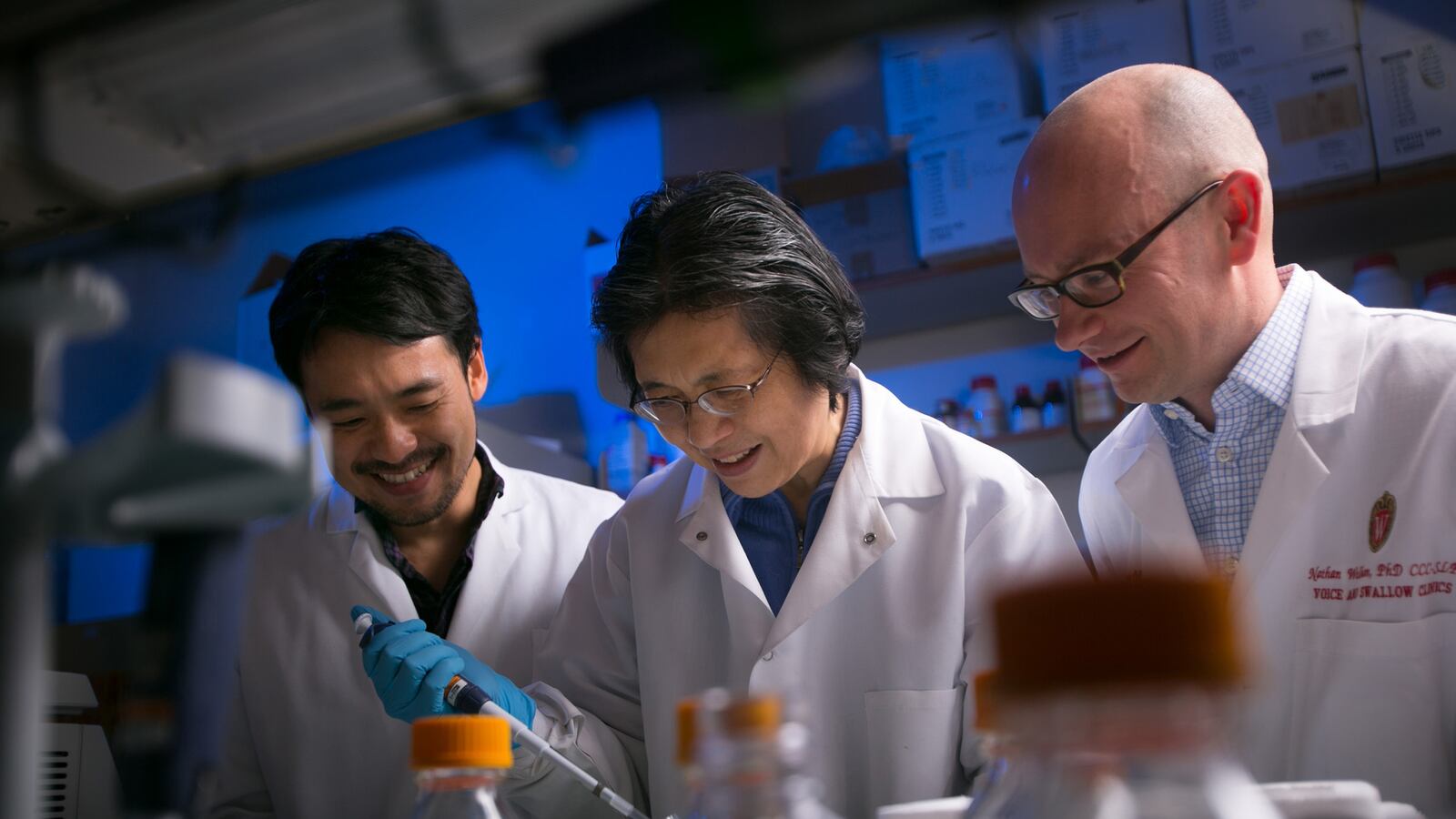Scientists have made promising breakthroughs in the world of bioengineering, successfully growing human kidneys, a mini-brain, and a limb. On Wednesday, a new body part worthy of talk was unveiled: vocal cords.
The paper, published in Science Translational Medicine, shows how University of Wisconsin-Madison researchers bioengineered vocal cord tissue from a cadaver. The tissue, which closely resembles real vocal cord tissue, is even capable of transmitting sound. Dr. Nathan Welham, an associate professor of surgery at UW and a speech pathologist, touched on the significance of the discovery.
“Voice is a pretty amazing thing, yet we don’t give it much thought until something goes wrong,” said Welham. “Our vocal cords are made up of special tissue that has to be flexible enough to vibrate, yet strong enough to bang together hundreds of times per second. It’s an exquisite system and a hard thing to replicate.”
The experiment began with vocal cord tissue from a cadaver and four patients who’d had their larynxes removed (unrelated to cancer). Next the tissue was “isolated and purified” so that it could grow from the mucosa. It was next applied to a “3-D collagen scaffold, similar to a system used to grow artificial skin in the laboratory.”
In 14 days, the cells began to grow into a “pliable but strong connective tissue,” that closely resembled real vocal cords—and felt like them too. Beyond its similar likeness, the new tissue showed built in ability to protect itself with a “basement membrane” that “helps create a barrier against pathogens and irritants in the airway.”
Perhaps the most exciting part of the experiment involved testing to see if the new tissue could transmit sound—a process that began with attaching them to larynges taken from cadaver dogs. Once aligned with a windpipe, the researchers blew warm air through it to analyze both whether it would produce sound and vibrate. It did both.
In the final step, researchers inserted the tissue into mice to ensure that the body would not reject it—another test the researchers said proved successful: “The tissue grew and was not rejected, performing equally well in mice that had the larynx-cell donor’s immune system (created via a blood donation from the larynx-cell donors) and mice with different human immune systems.”
The discovery, the first of its kind, could prove life-changing for those who struggle to use their voice.
According to the National Institute on Deafness and Other Communicable Diseases, at least 7.5 million Americans suffer from vocal impairments. An estimated 200,000 of them die as a result of these injuries and at least half a million more are sent to the hospital. For those with total vocal cord paralysis, the options for treatment are limited, often involving injections of collagen.
To be sure, the new vocal cord tissue was not perfect. The researchers said that it was “not as good as the real thing” and was made up of a fiber structure that was “less complex” than adult vocal cords. They also anticipated difficulty in finding enough health vocal cord tissue (without cancer) to use in the future. A significant amount of additional testing is needed before the procedure could move forward.
Overall, Welham and his researchers say the study reached a “series of milestones” and could prove a “robust benchmark” moving forward. News that brings the science world one step closer to restoring a function that is pivotal to human life.
“The power of the voice cannot be disputed…the voice is the primary means we all use to communicate with co-workers, loved ones, and the rest of society,” the paper concludes. “These data suggest feasibility for transplant and survival in the larynx as well as for function, ultimately giving patients back their voices.”





